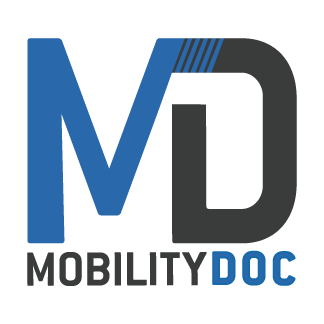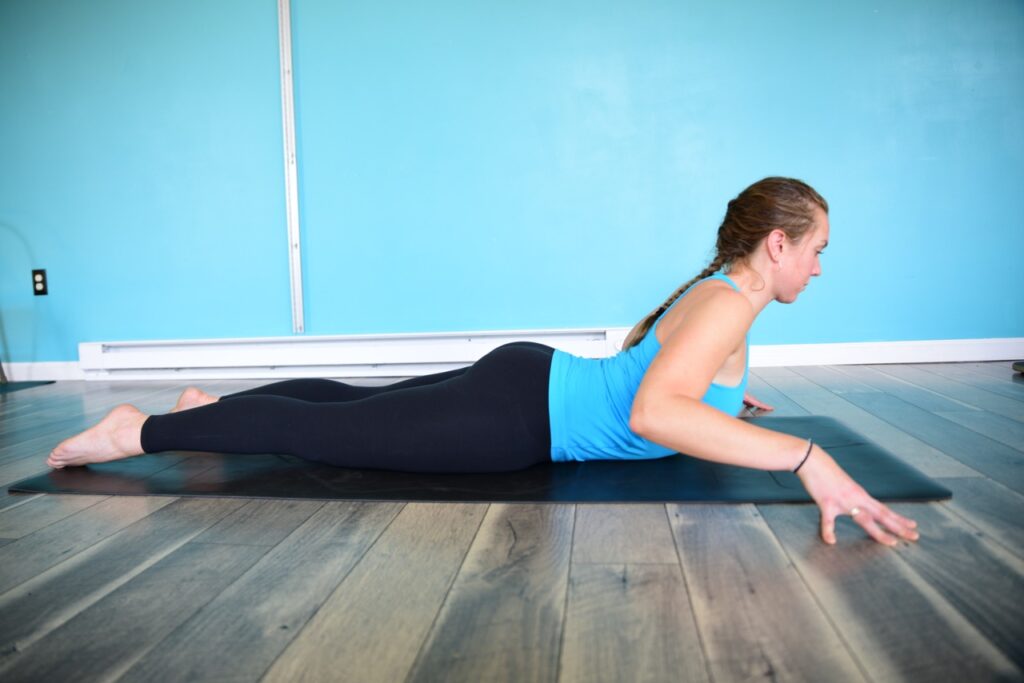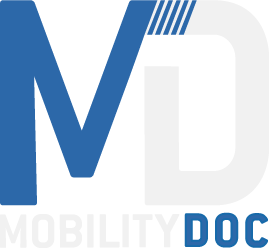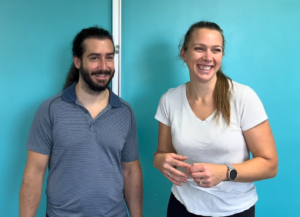We’ve been talking a lot about both the core and shoulder mobility. Through these conversations, one topic has repeatedly come into focus – the spine. Not just any part of the spine, more specifically the thoracic spine or middle back. If you want to save yourself some aches and pains, we need to make sure this area is mobilized. Mobilizing something means to keep it moving well. The specific movement we are interested in is called thoracic spine extention. This week we are going over why thoracic spine extention is important, what is causing poor mobility in the area, and how you can fix it.
We already went pretty in-depth with the makeup of this area so we won’t go too into that now. If you are interested in having a detailed refresher, go to our earlier post Shoulder Mobility and the Spine.
What is Thoracic Spine Extention
Let’s have a quick recap. The thoracic spine is your middle back. To give you a good idea of where this is, why don’t you put your hands on the base of your ribs. From there, move one of your hands to your spine. With the other hand, touch the base of your neck. You are now touching the top and bottom of your thoracic spine. In between your hands are 12 vertebrae that make up this section of the back. The part of the vertebrae you’re feeling is called the spinous process, which is the back most part.
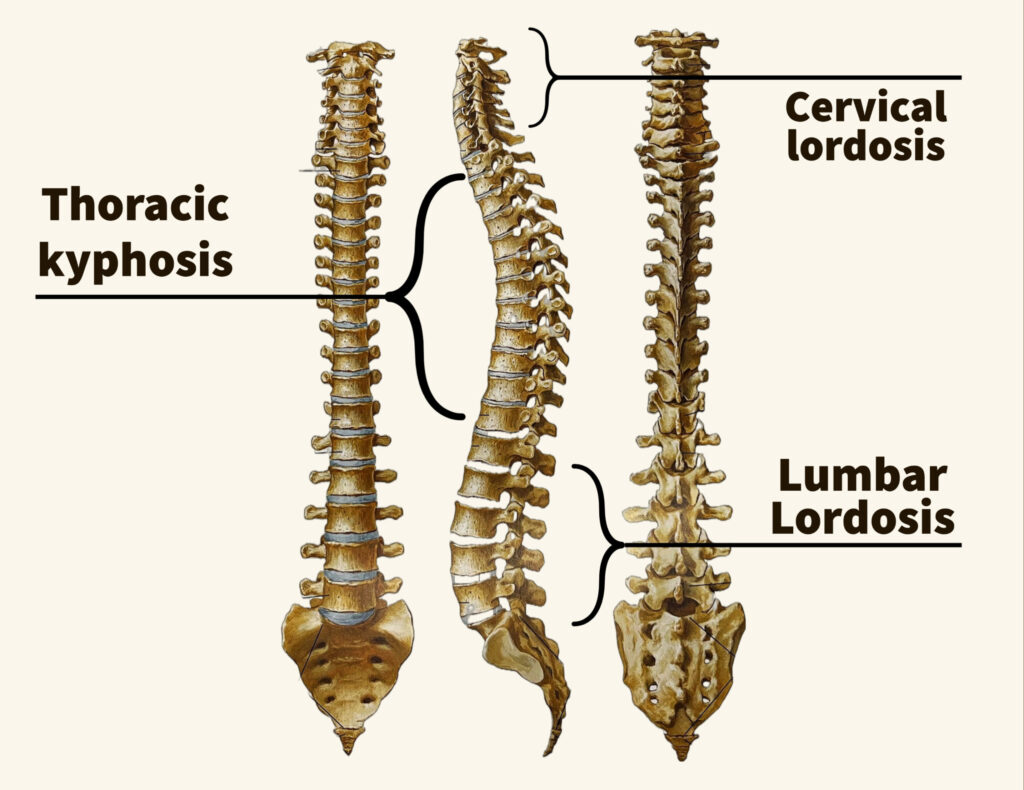
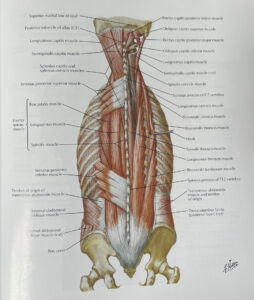
Thoracic spine extention is the movement where your middle back moves in towards your sternum. The name itself makes sense because it gives us the ability to extend forward. This is a subtle movement that many of us don’t even realize is happening. We commonly associate it with shoulder retraction, or pulling your shoulder blades back and together. Thoracic extention helps make that possible, but it’s not the same thing.
Last week we talked a bit about the core and the paraspinal muscles. This set of muscles runs up along the sides of our spine and help keep it in place. These muscles allow us to stand tall and move. Our spine has the amazing ability to move in 7 different directions. The two we are focusing on today are flexion and rotation. Flexion is the ability for the vertebrae to move forward and backward while rotation is our ability to twist.
Why it's Important
Tightness and dysfunction in this area can lead to so many other issues in the body you wouldn’t suspect. Often called the silent contributor, limited range of motion here is related to shoulder, low back, and neck mobility issues. This lack of flexibility leads directly to pain. Many people are surprised when gaining mobility in this region is almost always part of the journey to healing. If you’re suffering from any kind of shoulder, neck or low back pain, usually some kind of limited flexibility in the thoracic spine is related.
Your ribs are connected directly to this part of the spine. Because of this, it has a much more limited range of motion than say your lower back and neck. That doesn’t mean it shouldn’t move at all! Having flexibility in this area allows your muscles to move it forward giving you the movement you need to unlock proper mobility in your shoulders, neck, and lower back. That way you can do all of the things you love to do pain free!

What Causes Poor Thoracic Extention Mobility
We know that our ribs limit the amount of movement this part of the spine has. With that being said, posture is a huge factor. The way you stand and even more so sit greatly impacts the flexibility related to thoracic spine extention. If you’re used to being a couch potato, do a lot of driving, or work in a seated position most of the time, you’re going to have tightness in this area.
We are constantly slouching forward, rounding our backs, and looking down in front of us. No matter what we do, if there is a screen involved we are almost always sitting in an anatomically incorrect position. How many of you work in an office at a desk? According to the bureau of labor statistics, office workers spend over 80% of their workday in a seated position. When you go home to relax do you watch your favorite TV show or play on your phone? Now think about how you sit while you’re doing all of these things. Maybe you don’t sit, what if you’re standing. Where is your head when you’re checking out the latest feed on your favorite social media platform? Are you looking down at your phone? Now couple that with the time you spent in a chair at work.
Don’t get me wrong, I am the first one to sink myself into a comfy couch! What we need to do is be mindful of how potatoey we are and even do some counteracting thoracic spine mobility exercises.
How To Improve It
Kind of like a “best seller” almost everyone who sees us at one point or another gets mobility work in this area. With cultural norms, it is incredibly common to face issues and have limited flexibility in the thoracic spine. So how do we gain flexibility? We stretch.
More than stretching we are going to work on rotational aspects of the spine to loosen the vertebrae. That is right! Twisting can actually unlock the forward movement we are looking for in thoracic spine extention. This week’s exercise is going to be thoracic spine rotations to help us loosen up this problem area.
Now that you understand how important it is to have thoracic spine extention, pay attention to your sitting and standing posture. It can be really hard to change a habit, but making small adjustments every day can go a long way in a short amount of time. Stay healthy and stay active. Check in again next week for more mobility exercises!
You’re feeling a difference already for your flexibility? Then it’s time to start strengthening. A great exercise for this is called cobra press-ups. Subscribe to our YouTube channel to be notified when we publish our exercises.
